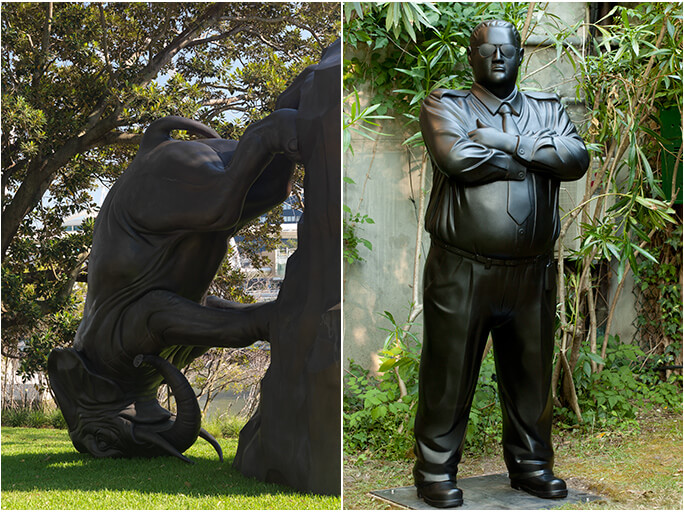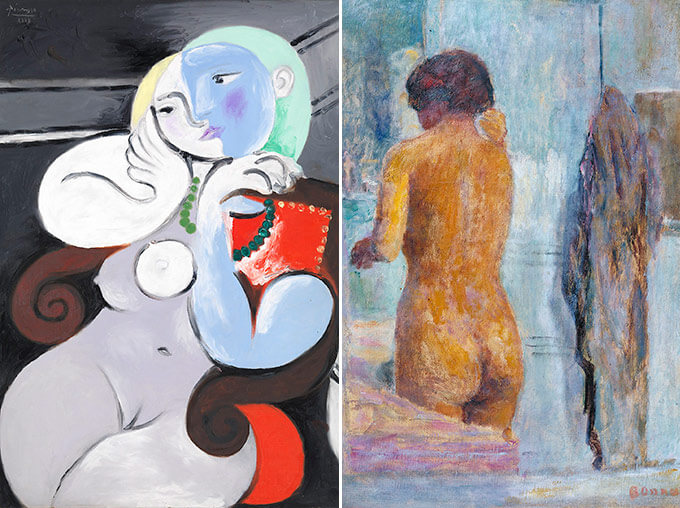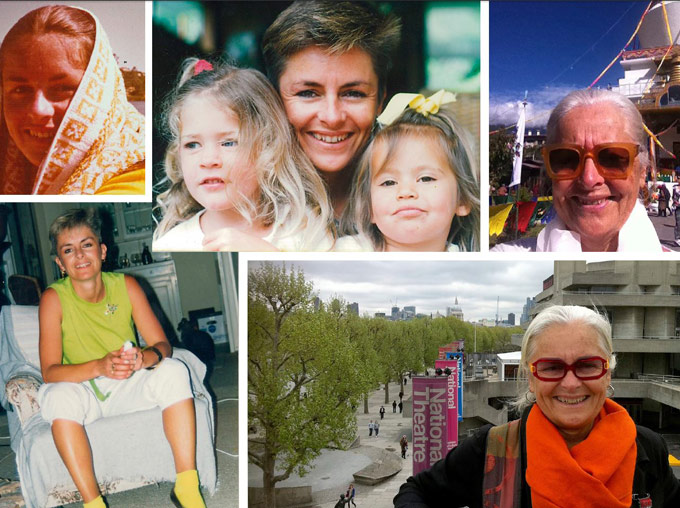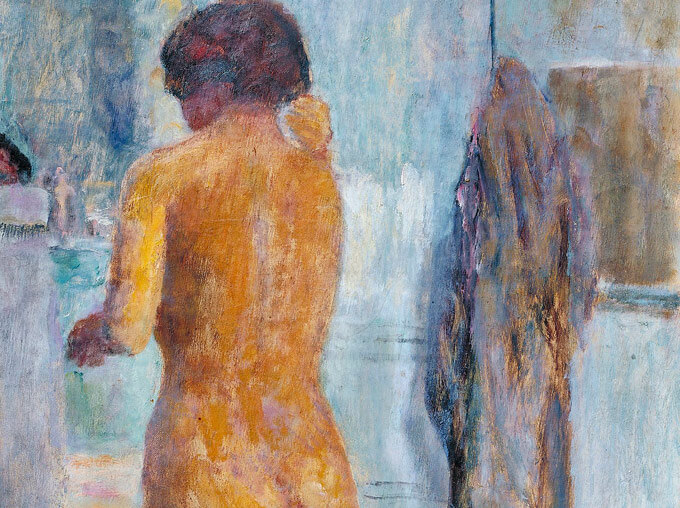Mar 6, 2017 Art

The Auckland Art Gallery’s upcoming exploration of the evolution of the nude in Western art is its major show for 2017. Metro took a preview tour in Sydney with one of the exhibition’s curators.
Marthe, the wife of artist Pierre Bonnard (1867-1947), spent much of her later life in the bath. Suffering from a tubercular condition, she was prescribed water therapy, and so bathed for several hours each day.
Bonnard painted her more than 300 times, many of his works showing her preparing for, immersed in, or emerging from a tomb-like bathtub. His gentle, sensuous depictions range from the traditional viewing perspective of the bather seen from behind, to radical compositions in which Marthe becomes a fragmented figure whose legs float in disembodied space, the blue tones of her flesh visible through the water.
Of more than 100 works in The Body Laid Bare: Masterpieces from Tate, it is Bonnard’s paintings of Marthe that co-curator Justin Paton would take home if he could. It’s their tenderness and radiant, lyrical light he most admires. “He kept painting her that way after her death,” he says, “even when she was no longer there.”
Paton, a New Zealander who is the head of international art at the Art Gallery of NSW, worked with Tate curator Emma Chambers (see sidebar on page 91) to bring the works down under. Paton gave Metro a tour of the exhibition in Sydney (where it was titled Nude) before it comes to Auckland in March.
Spanning three centuries of Western art — and thus capturing major art movements and significant social change — it makes sense for the exhibition to unfold chronologically. Beginning with the heroic bodies of the late 1700s and ending with vulnerable contemporary ones, it charts how depictions of the nude have persisted yet also changed and taken on new meanings for successive generations.
Through these representations of the nude in drawings, paintings, sculpture and photographs, we are confronted with the power of nakedness, of the things we don’t usually see. Speaking to our shared vulnerability as human beings, this exhibition defies us not to feel wonder, discomfort, admiration, desire.
An accessible hit parade of works by the likes of Matisse, Picasso, Rodart, Bacon, Moore and Freud, the exhibition also has works by lesser-known artists. Some are safe (though daring for their time), others controversial; the human form by turns idealised, eroticised, provocative, forbidden and fragile, in a nuanced counterpoint to the truncated and sexualised bodies we see on social media.

As The Body Laid Bare unpacks the nude through time, themes emerge. The artifice of 19th-century academic art, when artists looked back to classical Greece, gives way to the late 19th and early 20th centuries, when the nude in art was fiercely debated. (It wasn’t until 1893 that women at the Royal Academy in London were for the first time permitted to draw from partially nude life models.) In the heart of the Victorian era, John Everett Millais’ naturalistic depiction of a naked damsel in distress being freed by a knight in suitably shining armour (The Knight Errant, 1870) was condemned as “debasingly sensual”. The original painting showed the woman looking at her rescuer; Millais reworked it to have her looking away, as if ashamed.
The rejection of classicism and mythology in the 20th century in favour of more domestic and intimate representations is traced through such works as Picasso’s Nude Woman in a Red Armchair (1932), one of the remarkable sequence of portraits of the artist’s lover Marie-Thérèse Walter.
From the 1920s to 1940s, two visions of the nude held particular sway: surrealism — which fragmented the body in evocations of what were largely male dreams and desires (although women surrealists offered alternative views) — and realism. Here, idealism makes way for male yearning in Stanley Spencer’s poignant Double Nude Portrait: The Artist and His Second Wife (1937). The marriage was never consummated.
The abstract art of the 1950s and 60s heralded the era of “paint as flesh”, says Paton. “Francis Bacon was arguably the most influential postwar painter of the figure, evoking personal passions and larger anxieties with expressively brushed and suggestively distorted male nudes.” Lucian Freud’s wondrously dense oil portraits are also represented.
The scope of The Body Laid Bare is extraordinary; the artistic firepower threatens to overwhelm as early as the 19th century, long before David Hockney’s etchings of gay couples, made when homosexuality was illegal in England, Louise Bourgeois’ arched male figures (among the show’s feminist critiques of the power imbalance inherent in traditional nudes), photographs by Tracey Emin and Cindy Sherman, and various interrogations of the naked extremes of human experience — birth, death, pain and ecstasy.
The exhibition culminates in The Kiss (1901-04), Auguste Rodin’s famous depiction of erotic love, carved in marble and weighing more than three tonnes. This is first time it has been seen outside Europe. Now acclaimed, it caused outrage the first time it was exhibited publicly, and was presented partially draped in a sheet.
Fast-forward to 2016, and yellow stickers are used to cover the nipples of a female nude on the cover of Vault, the Australian art magazine. Even today, the human body sometimes remains shrouded from view.

Tate Britain’s Emma Chambers, co-curator with Justin Paton of The Body Laid Bare: Masterpieces from Tate, talks to India Hendrikse.
What is the significance of this exhibition travelling to Auckland?
It is a chance to encounter some of the great figurative artists of the modern era: Auguste Rodin, Pablo Picasso, Henri Matisse, Stanley Spencer, Francis Bacon, Lucian Freud and Louise Bourgeois. They are united with leading contemporary artists such as Cindy Sherman, John Coplans and Tracey Emin. Many of the works have never been seen in New Zealand before and Rodin’s famous sculpture The Kiss had never travelled outside Europe before being included in this exhibition.
Can you tell us a little about the curating process?
The Body Laid Bare: Masterpieces from Tate explores the theme of the nude from the 18th century to the present day. It follows a broadly chronological order through a series of thematic sections examining subjects such as the nude’s central role in 19th-century historical painting, the intimate boudoir nudes of the early 20th century, the nude as a focus for modernist experimentation in the 20th century, and the nude as the centre of gender politics from the 1970s.
What does it mean to you to see the body reflected in art?
Images of ideal bodies are everywhere in our visual culture and looking at the nude in art over a period of three centuries gives a valuable context to these contemporary images. The exhibition both shows how our ideas about the human body have changed over time and confirms its continuing importance to how we define our humanity through our sexuality, mortality and vulnerability.
Do you have a special connection to any particular piece?
Sylvia Sleigh’s Paul Rosano Reclining is one of my favourite works in the show because of the way it challenged all the expectations of looking at the nude when it was painted in the 1970s. It is simultaneously a very intimate portrait that captures the personality of the model and a trailblazing piece of feminist art.
Censoring the body laid bare
Metro editor Susannah Walker and chief censor Dr Andrew Jacks discuss the criteria for when “naked” becomes “nude,” providing a unique insight into the issue of censorship in New Zealand.
March 26, 1pm, Auckland Art Gallery auditorium, free.
The Body Laid Bare: Masterpieces from Tate runs from Sat 18 Mar 2017 — Sun 16 Jul 2017
This article is published in the March- April 2017 issue of Metro.
Get Metro delivered to your inbox

/MetromagnzL @Metromagnz @Metromagnz






